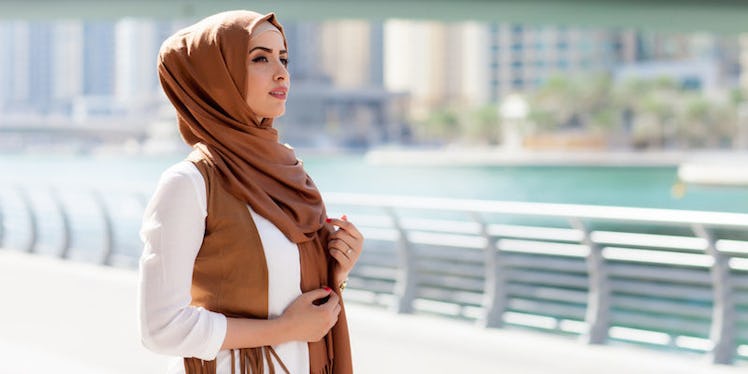
How The Fashion Industry Is Finally Paying Attention To Muslim Consumers
Fashion-conscious Muslims often have to make difficult choices. Hijabistas need to uphold their religious dress code and meet their spiritual needs. In the past, this was simply done by layering fabrics, but modern fashion is much more sophisticated and diverse now.
Mainstream brands such as Chanel, Dolce & Gabbana and Donna Karan now offer designs that meet the aesthetic needs of Muslim women. But do they meet all of the additional criteria?
This move into the wider fashion world has not been entirely accepted by all, as many Muslim women require their clothing to be as eco-friendly as possible. The argument for this – as outlined in the Quran and the Sunnah – is that a Muslim woman must not only dress in a certain way, but they must also ensure they do not harm the living creatures on the planet.
The Importance of Sustainable Fashion
The term “sustainable fashion” most readily applies to clothing made of green resources. This includes recycled materials, as well as organic cotton, crops or other grown fibers. Sustainable materials are becoming more readily accepted, but there are many misconceptions within the fashion world that they are rough and difficult to work with.
Today, there is little to no difference when comparing recycled materials to synthetic fabrics. Furthermore, this push for greener clothing is already seeing benefits, including less clothing going to landfills and the reduction of dangerous chemicals needed to grow non-organic fibers.
For every hijabi, the traditional style involves a long, flowing abaya for the body and a hijab that meet the needs of the religion’s dress code. It is not uncommon, however, for these articles to be made of polyester, nylon, rayon and other synthetic fibers.
When one considers the chemicals and treatments used to create these fabrics, and how they often damage the environment and involve heavy emissions, it can be argued these very clothes cause women to fail in their duties toward nature.
Becoming Greener
The aforementioned issue is important, as a green lifestyle is highly important for any environmentally conscious Muslim. But actually, it is believed we all have a degree of responsibility as guardians over God’s land, and we should avoid encouraging any negative effects or participating in them.
As part of these ongoing efforts, many young Muslimahs are using the Internet to encourage greater awareness and the available knowledge of sustainable fashion. By increasing awareness and sharing knowledge of sustainable clothing, many Muslims across the globe have started leading an even greener Islamic way of life.
That said, there is still some difficulty encouraging this is awareness in Asia. While Europe and North America have their own big fashion brands, there are not so many in this part of the world. Still, a number of businesses — such as Waste2Wear with their local partner, Kloth Malaysia — are starting to utilize sustainable or recycled textiles. They are currently providing green hijabs, with plans to push into a wider range of clothing.
Mainstream Support For Sustainable Fashion
Furthermore, Muslim women are not alone in their push for sustainable materials or mainstream fashion. For instance, Dolce & Gabbana — with its collection of abayas — is just one of the more recent fashion brands to introduce a range of muslim dresses for hijabis.
The new range adds luxury fashion to an area that has historically been overlooked, but some would argue it is not doing enough. From 2011 onward, H&M has been pushing for ethical, greener fashion within the industry, while also simultaneously addressing the needs of Muslim women. This be most evidently highlighted with the company’s “Close The Loop” campaign.
Not only did this feature sustainable fashion, it also featured a Muslim model — Mariah Idrissi — complete with a hijab. Idrissi also continues to encourage sustainable fashion and attempts to encourage changes within the Muslim community itself.
Between these two brands, it’s clear that the wider fashion industry is becoming aware of the needs of Muslims and their respective clothes. While some are addressing the dress code directly, others are beginning to see the need for eco-friendly materials and new ranges of style. H&M has been positively received by the environmentally conscious members of the Islamic faith.
There are many who enjoyed the “Close The Loop” for its acceptance of diversity and the breakdown of existing fashion rules, yet they failed to see the dual message about recycling. Similarly, there is also a wider group of Muslims who appreciate high street brands that are now identifying and catering to their needs. Perhaps people need to realize that everyone plays a part in looking after the Earth, whether it’s young Muslims looking for the right hijab or middle-aged women looking for a new dress.